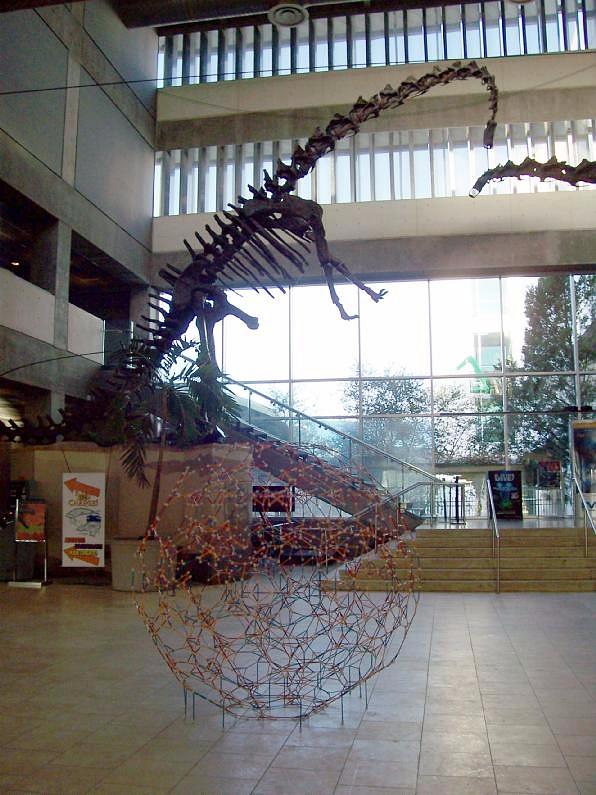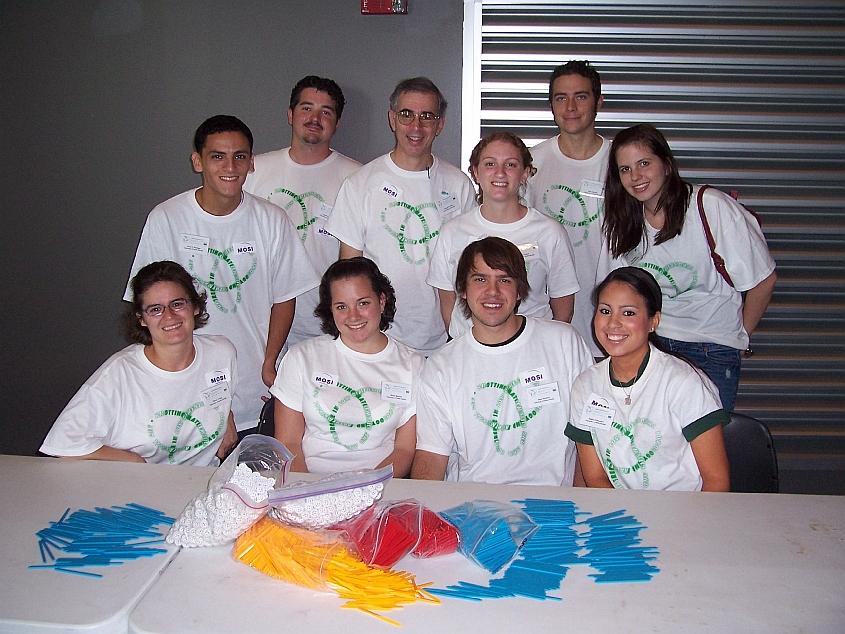The image above shows a six-foot diameter model of the truncated
120-cell in the lobby of the Museum of Science and Industry in Tampa,
Florida. On November 1, 2007, we built this as part of the art
exhibit
associated with
the conference Knotting
Mathematics and Art, held at the University
of South Florida (USF). This is a temporary exhibit celebrating of
the beauty of mathematics, in the form of a large geometric
sculpture. Thank you
everyone who participated.
On the
table above,
you can see all the material we needed---3680
Zometool parts. I am
standing amongst the students from
the USF math club who started working with me around 1:00. Seated:
Nicole Trapp, Helen Barclay, Dane Harmon and Jessica Couvertier.
Standing: Enoc Santiago, Andrew Burrus, George Hart, Edy Urken, Nick
Orletzky and Laura Torres.
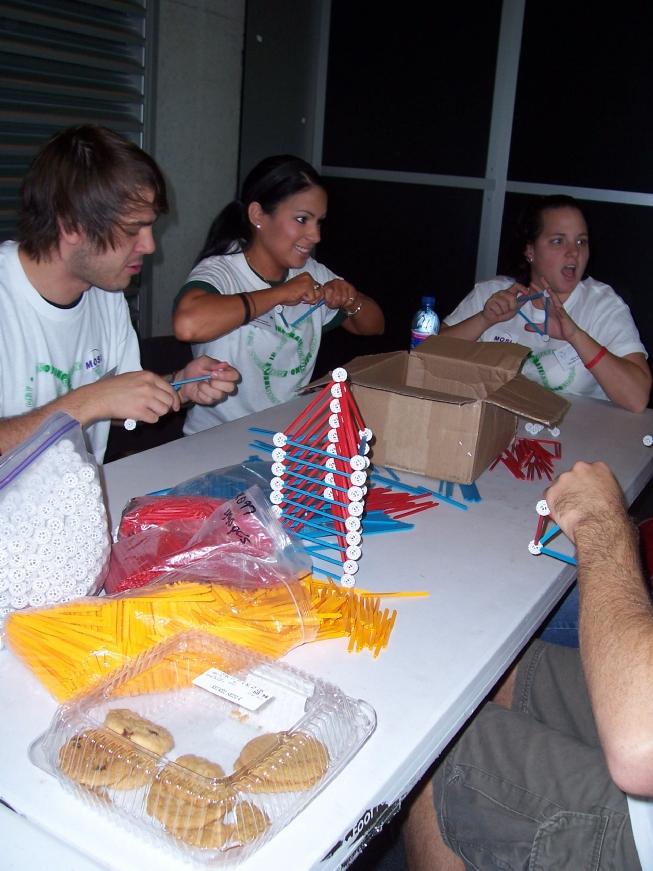
We began by making stacks of
tetrahedral modules (and eating cookies for strength).
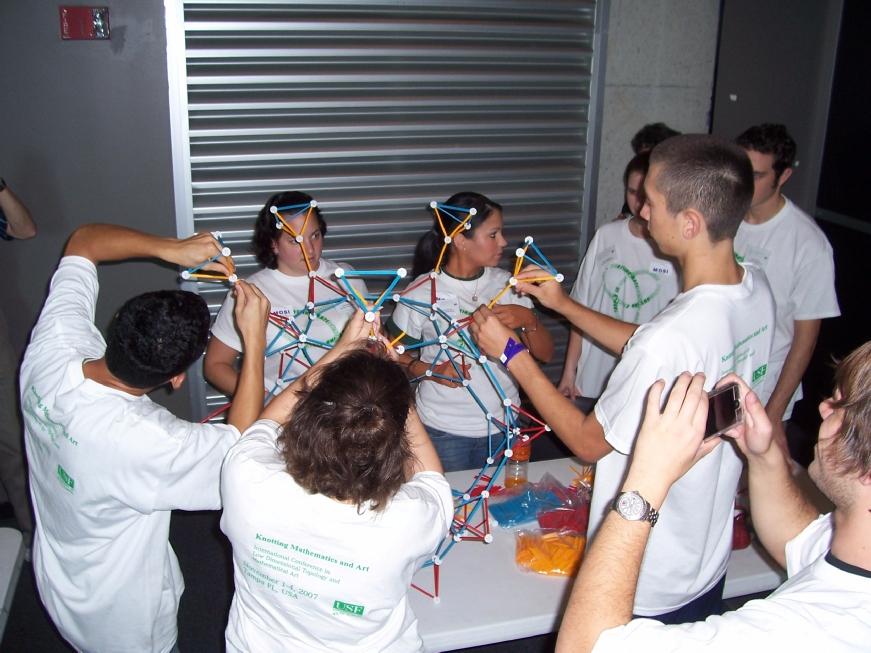
Twenty almost-regular tetrahedra join together to
make the blue truncated dodecahedron in the central core. Then more
compressed tetrahedra are attached around it on all sides, and it looks
like a giant virus.
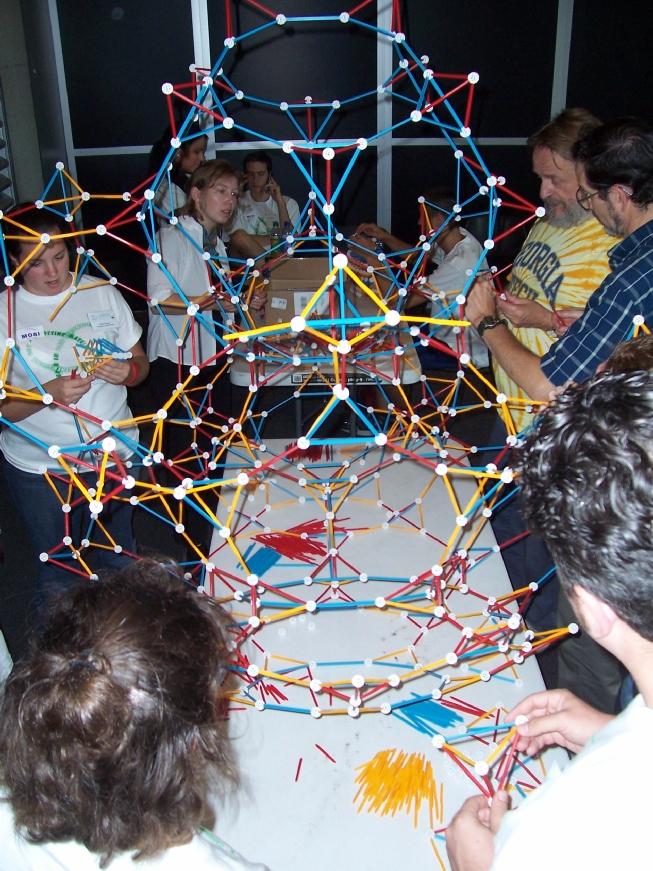
More helpers arrived and the structure continued to grow outwards.
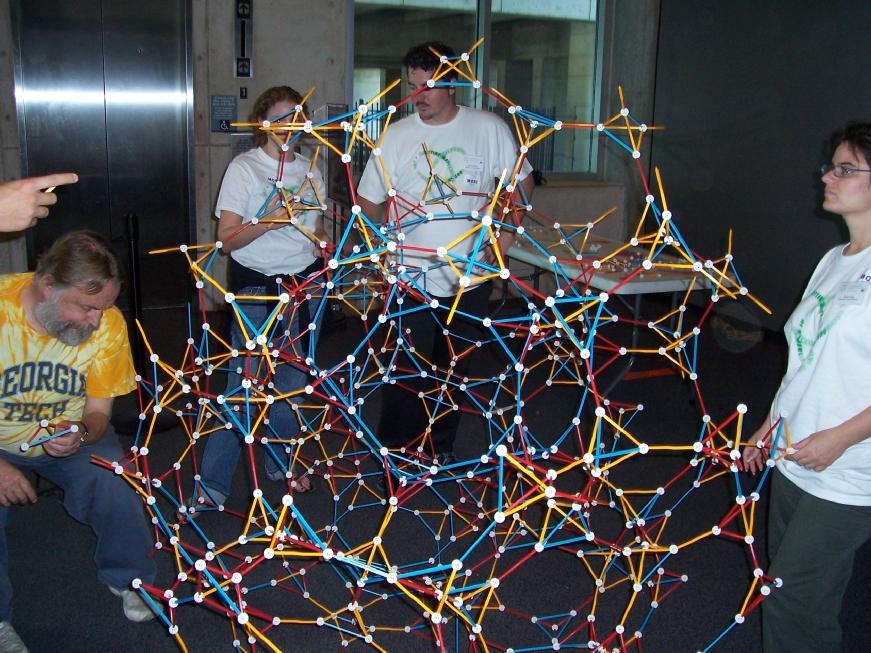
After working our way out to the exterior on one
side, we put it down on the floor so we could come at it from all
sides. We continually had to solve little puzzles about about which
type of cell goes where.
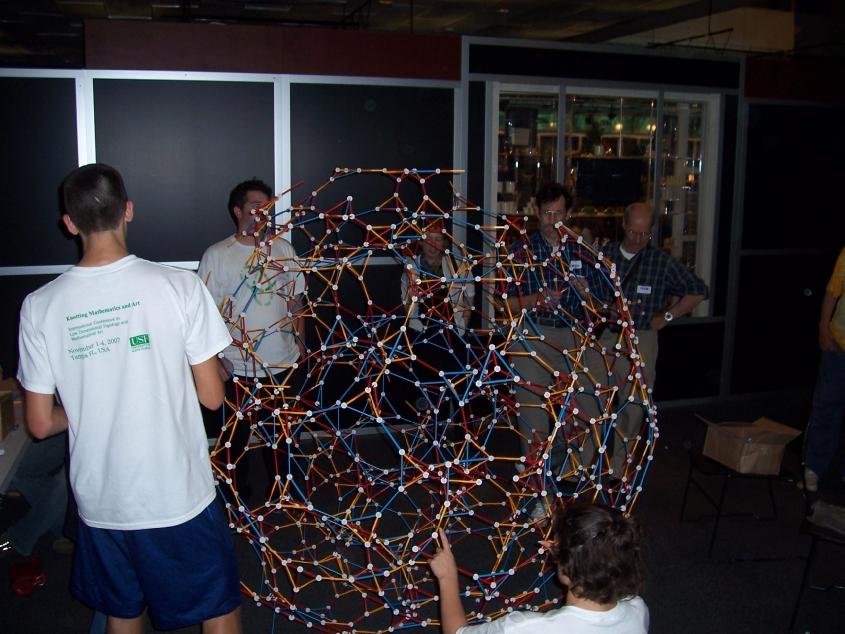
It grew into a six-foot diameter sphere with many internal layers.
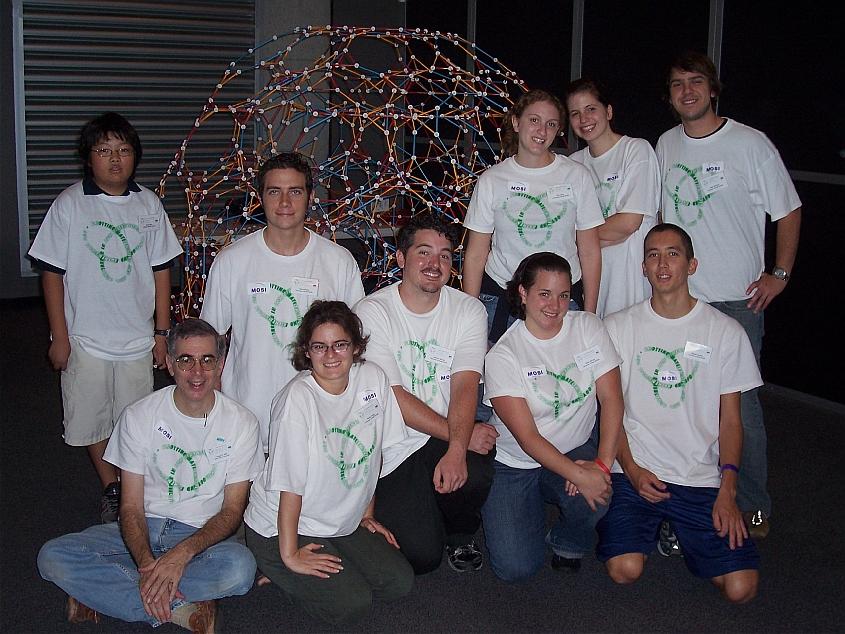
Here is the crew at 5:30 that evening, exhausted
after four and a half
hours of construction. In addition to the names above, we include Laura
Handbury and Kaita Saito.
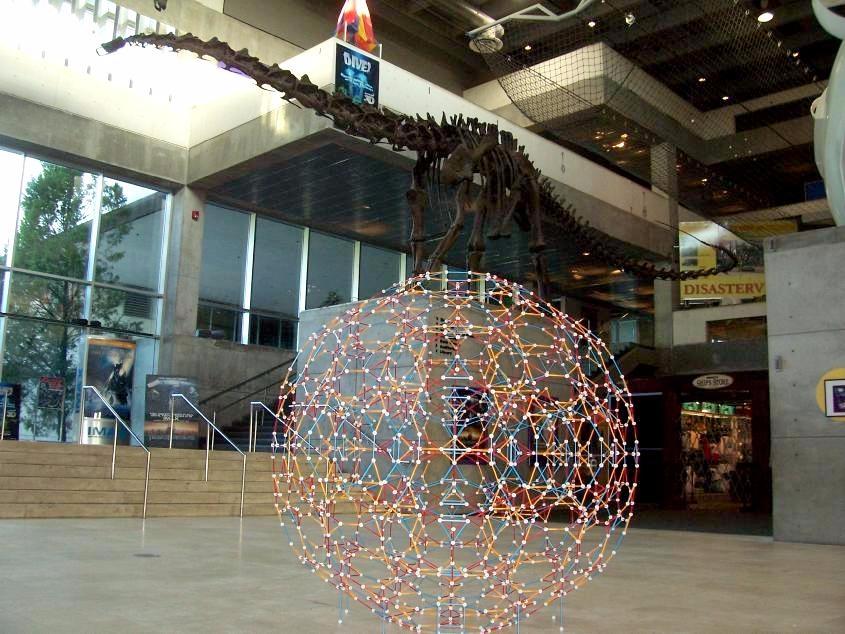
The next morning, before the museum opened, we moved it into the lobby.
Mathematically the form is a three-dimensional projection of a uniform
four-dimensional polytope:
The
Truncated 120-Cell. Three truncated dodecahedra and one
tetrahedron meet at each vertex. It is one
of
the
fifteen uniform polytopes in the H4 family that can be made in
projection with Zometool parts.
